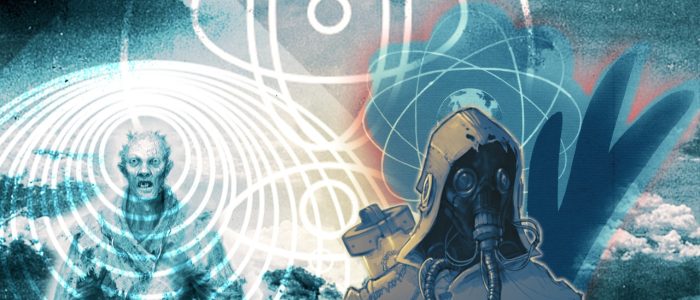Joker: Mental illness done right?

Joker: Mental illness done right?
Introduction
“Joker” created by Todd Phillips’s was the most nominated comic book and highest grossing movie of all time (R-rated). Star Joaquin Phoenix, who won for Best Actor, faced controversy since the movie’s release, from helping the Golden Globes go meatless to being arrested at a Jane Fonda climate change protest.
“Joker” had been generating controversy even before its release. People were concerned about the portrayal of a mentally ill person turning to violence would perpetuate false ideas about mental health issues, undermining recent gains in public understanding. Doctors who work on acute inpatient psychiatric wards, say that serious mental illness is our daily reality.
Doctors argue that the film’s dominance in the debate about portrayals of mental illness in the movies comes at a curious time. Awareness about relatively common mental-health issues such as depression and anxiety is increasing and a people now have dismissal reaction towards unhelpful prejudices that used to surround them. These are now readily discussed without shame and often represented in the media with a well-informed grasp of the facts, thanks to effective information campaigns.
While reviews have ranged from labeling the film as brilliantly provocative to irresponsible in an era where there have been so many mass shootings, one of the biggest conversations it has generated both on screen and off has been about mental health.
Movie Background:
“Joker” tells the story of Arthur Fleck, who turns to violence after feeling unfairly outcast by society.But he lacked the realization of his wrong doings. The idea of him getting violent involves idealization of having everything what he wants without taking the responsibility of his actions.
It attempts to explain how a man who was once a mental patient turned into the most infamous villain in the Batman saga.
After Arthur discovers, for example, that his mother lied to him his entire life—she maintained that she gave birth to him, but he discovers he was adopted (and also abused) as a child—he suffocates her. “She totally misled him,” Its like the carpet has been ripped out from underneath his feet with this shocking revelation. He’s reacting to this very upsetting, insulting discovery. His whole life has been reversed. His whole identity is gone.”
Arthur himself wouldn’t have thought of turning into a mass killer. But the circumstances, people’s behavior towards him, his loneliness, his illness everything became a reason for him getting violent.
The character portrayed anti authority avatar of aggression whereby the Joker only has rules for himself but he is not willing to follow rules for others. Thus his mental illness can’t be a justification for his anarchical behavior.
Stigma
As discussed above that several mental illnesses like depression are now being discussed openly, however, severe mental health conditions, such as psychotic illnesses, remain shrouded in stigma and are consistently misrepresented and misunderstood.
Arthur’s bursts of incongruous and uncontrolled laughter is a neurological condition pseudobulbar affect – also known as “emotional incontinence” – perhaps caused by his childhood head trauma. Joker may make an attempt to unpick the difference between the psychiatric and the neurological – between a mental illness and a medical disorder – but it runs the risk of conflating the two with a haunting, stigmatizing and problematic image
Portrayals of mental illness in film is a delicate task which can perpetuate unfounded stereotypes and spread misinformation. One of the more toxic ideas that Joker subscribes to is the hackneyed association between serious mental illness and extreme violence. The idea that mental sickness necessarily leads to violence against others – implied by the behavior of Phoenix’s character Arthur stopping his medication with his increasingly frequent acts of violence – is not only misinformed but further amplifies stigma and fear.
According to researches, association between mental illness and violence is exaggerated and people with severe mental illness are more vulnerable to violence from others than the general population.
Psychiatrists’ remarks:
Several doctors and Psychiatrists have shared their views about the portrayal of mental illness in Joker.
Dr. Ziv Cohen, a criminal psychiatrist and clinical assistant professor of psychiatry at Cornell University, specializes in violence, predatory behavior, psychopathy, and other toxic personality disorders. He discussed that the film portrays the lack of resources and neglect around mental health quite well, but it also gets a lot wrong.
“Research clearly indicates that individuals with mental illness are no more violent than the population as a whole,” he said. “In fact, persons with mental illness are more likely to be victims of crimes than to commit them.”
Cohen says that we could think ‘’Joker’’ as a psychopath, but again it is probably too simplistic. Psychopaths, after all, thrive on some of the most challenging career paths, like law, medicine, and leadership roles, because of their ability to deal with stress with a cool head. Most of the time they do it without murdering anyone. He further argues that human history has seen some of the major crimes being committed by the persons without any mental illness or evidence of psychopathy in their daily lives. So he thinks that the Joker character forces us to grapple with this innate human capacity for evil, which is ultimately unexplainable.
Psychiatrists Vasilis K. Pozios and Praveen R. Kambam of Broadcast Thought, a group that provides mental health consulting to film and television projects are of the view that the movie too much relies on mental illness.
The U.S. Department of Health and Human Services report that the vast majority of people with mental health problems are no more likely to be violent than anyone else: Only 3% to 5% of violent acts can be attributed to individuals living with a serious mental illness.
Positive aspects cited by the experts tell that “Joker” depicts a true picture of the daily life of a person struggling with mental illness and the breakdown of social support for those who desperately need it – especially that pivotal scene with the social worker trying to help Arthur.
Northern Virginia social worker Devra Gordon says that the movie truthfully depicted that how one day you have a program, and the next day you don’t. And you see how that impacts the people you serve,” “It’s enormously frustrating. We’re dealing with people’s lives.”
Another Psychologist Roblyn P. Lewter at Virginia’s Stratford University says “Joker” provides a powerful view into the “daily struggle for so many people with mental illness (as they try) to conduct ‘regular’ lives, and how knowingly and unknowingly cruel and insensitive the general public can be. That tends to only exacerbate their mental health symptoms.”
Conclusion
Joker as a movie has been applauded and appreciated by the audiences. But in psychiatrists’ view, the portrayal of mental illness in the movie may not be the reality. The movie paints the villain’s violent actions as inevitable because of his mental illness. This leads to stigmatizing mental illness and depicting its very existence as inherently dangerous thus shifting the attention from real predictors of violence.
Joe Parks, a psychiatrist and Medical Director for the National Council for Behavioral Health, says he felt the mental health portrayal in “Joker” was “unnecessary” and “stigmatizing,” though he praised the film for emphasizing the importance of “being kind to one another, and not bullying.’’ He further explains that we need to take Joker as a fantasy movie about a comic book villain as ‘Joker’ is not a documentary about mental illness.
So in writer’s view, as far as entertainment is concerned, the movie is a better option to watch. But if the movie is to be conceived as a depiction of the behavior of mentally ill person and to give a justification for his violence, we can deduce that has not been done in a right way.




